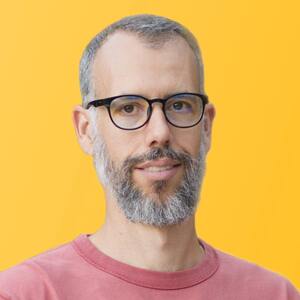I'm a technology leader and Computer Science Engineer with
over 16 years of hands-on experience, leading by example
to set a high bar. I build calm, high-output engineering teams where
trust, ownership, and transparency turn into customer outcomes. I favor
simple systems, small bets, and written decisions.
I care about people first and results always.
Work Experience
-
Leading engineering for a platform serving
22,000+ monthly active users with
50+ NPS customer satisfaction
-
Scaled the engineering team 6→22 in 9 months while
maintaining budget constraints
-
Accelerated product velocity with per-PR testing by introducing
infrastructure as code to achieve
multiple releases every day
-
Fostered a
strong team culture through
regular 1:1s and career development to achieve consistent
9/10 satisfaction scores
-
Helped ship
AI-powered review features
by unblocking technical roadblocks and adapting infrastructure to run
Python ML workloads to enable sub-30-second review processing.
-
Architected global infrastructure strategy for U.S. market expansion,
implementing multi-region deployment and data residency
compliance
-
Led security initiatives to achieve
clean yearly audit reports and obtain
ISO 27017 certification
-
Instrumental in securing €2.8M Series A funding through
comprehensive technical due diligence and engineering strategy
presentation
-
Implemented team performance metrics
to
identify bottlenecks and optimize processes.
-
Reduced change by failure rate by
leading the adoption of automated testing (100% unit
coverage + E2E browser tests), enforced via CI/CD.
-
Involved in feature concept discussions to ensure
reliable, performant and secure software
-
Played key role in hiring: interviewed candidates,
onboarded new engineers, and introduced a take home assignments.
-
Enabled real time collaboration features in our app
with a websocket service
-
Protected our free trial from abuse
to reduce infrastructure costs and allowing the team to
focus on the genuine power users.
-
First full-time developer at Filestage, taking over from founders,
students, and contractors to stabilize a fragile codebase.
-
Implemented admin panel with impersonation capabilities to improve
customer support efficiency by reducing by half the
time to investigate issues
-
Stabilized platform reliability from multiple weekly outages to
99.9% uptime through observability and monitoring
-
Architected modular system design, reducing codebase complexity by
25K LOC and enabling faster feature development
-
Developed cost-efficient web service powering complex geo queries at
100 req/s and 200ms p99 response time
-
Developed high-quality native mobile apps achieving
99.5% crash-free sessions
-
Combined our apps reached 100k MAU and
4.5/5 rating
-
Hired, coached and led a
small team of junior developers
-
The Spanish Ministry of Culture granted the project with
50k€ (2nd out of 500 projects)
-
Built comprehensive platform enabling point-of-interest creation and
native mobile app publishing with offline functionality
-
The Spanish Ministry of Tourism granted our project with
206k€
-
More than 200 apps released with our builder with a
total of 250k downloads
-
Developed feature-rich geotagging social network for web and mobile
platforms
-
Accepted from 500 applications in a startup incubator
(Desafío 22)
-
Led development of critical trading systems for derivatives pricing
within 20-developer team
-
Automated deployment processes, reducing deployment time from hours to
minutes
-
Improved financial web portal performance by
50% through systematic optimization
Technical Expertise
-
Architecture & Platforms: AWS, Infrastructure as Code,
API Design, Multi-region Deployments, Data Residency Compliance
-
Leadership-enabling Technologies: CI/CD, Monitoring &
Observability, Security & Compliance (ISO 27017), Performance
Optimization
-
Core Programming: JavaScript (Browser & Node.js), Java,
SQL, Bash, Swift, Python
-
Databases & Storage: PostgreSQL, MongoDB, SQLite, Data
Architecture
-
Engineering Management: Team Scaling (6→22 engineers),
Technical Strategy, Hiring & Onboarding, Performance Management
-
Development Practices: Test-Driven Development,
Domain-Driven Design, Code Review Processes, Quality Frameworks
-
Project & Product: OKRs, Agile Methodologies, Technical
Due Diligence, Startup Environments
Education
Courses
Last updated: December 19, 2025

 Filestage - manage feedback on creative
assets
Filestage - manage feedback on creative
assets








 Filestage - manage feedback on creative
assets
Filestage - manage feedback on creative
assets




 Histories - Amazing historical facts near
you
Histories - Amazing historical facts near
you







 Kolobee - Tourism apps
Kolobee - Tourism apps





 Kolobee - Interesting things nearby
Kolobee - Interesting things nearby










 BBVA - Corporate Investment Banking
BBVA - Corporate Investment Banking
 Afi - finance consultancy and training
services
Afi - finance consultancy and training
services